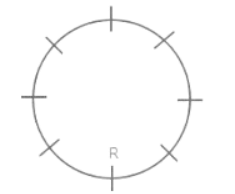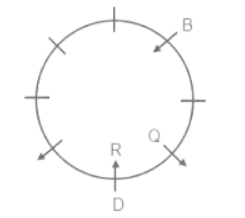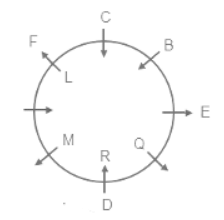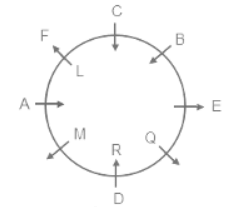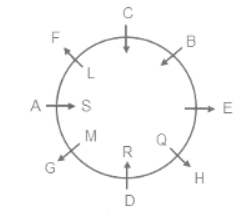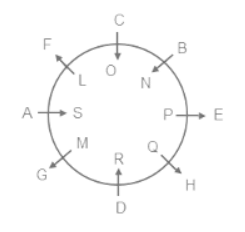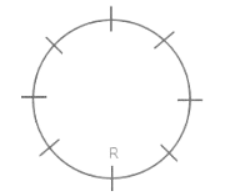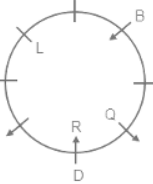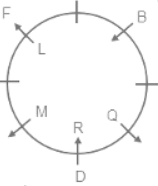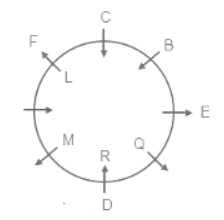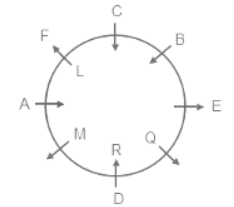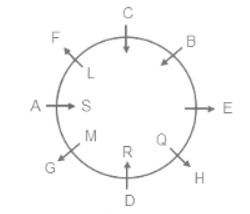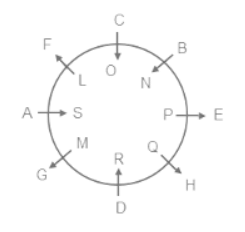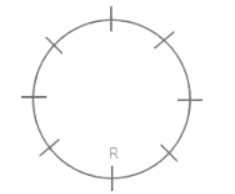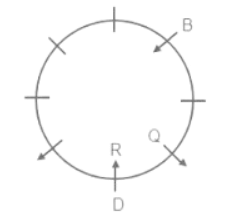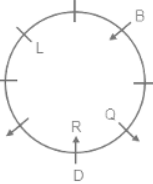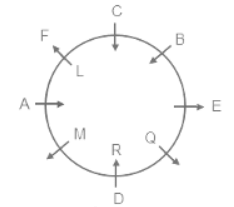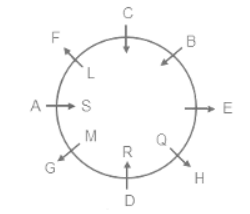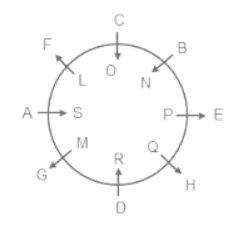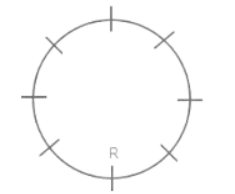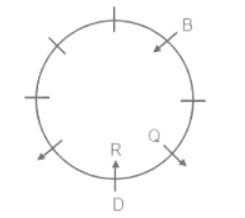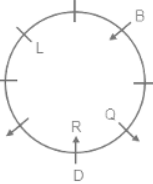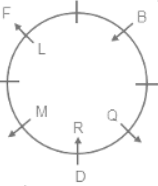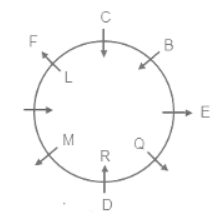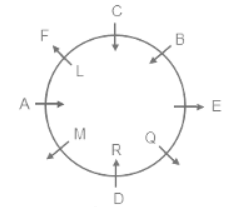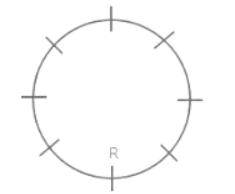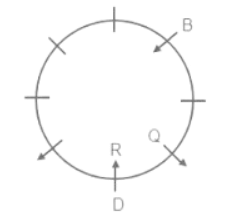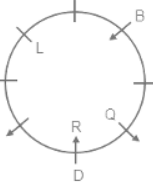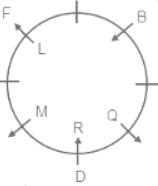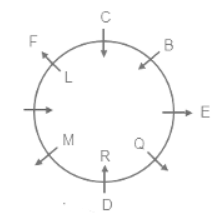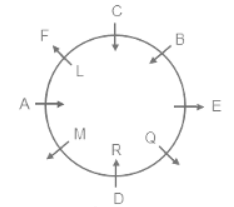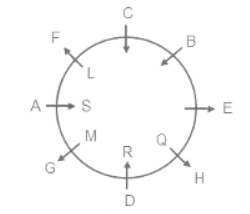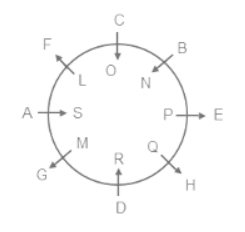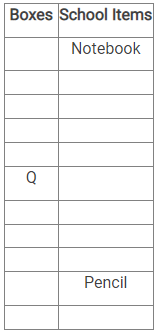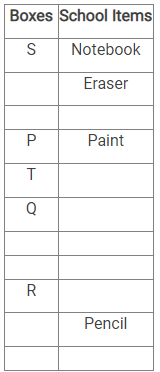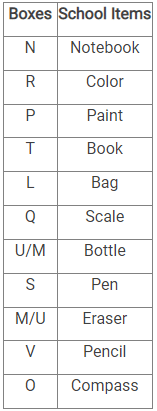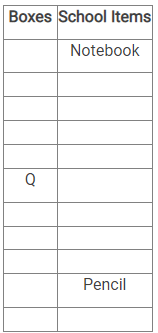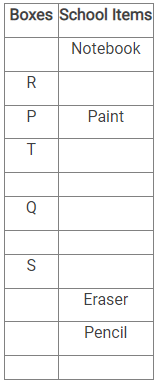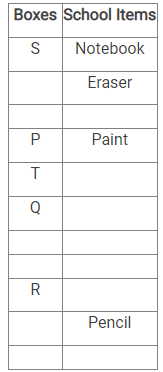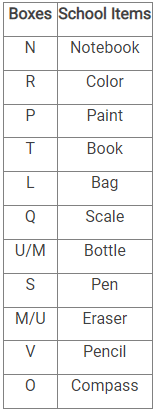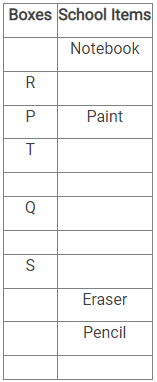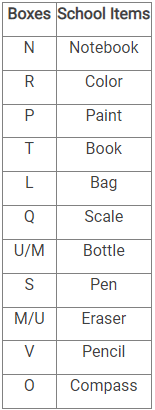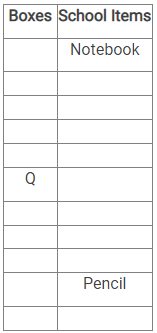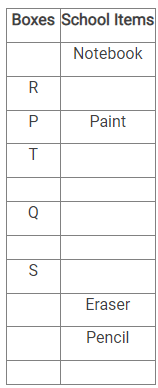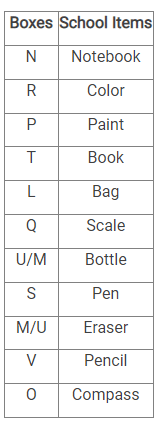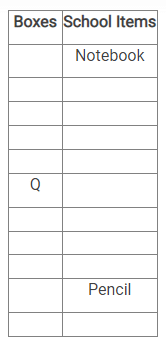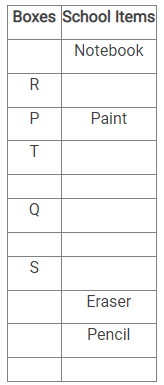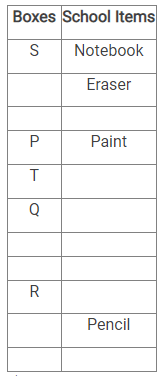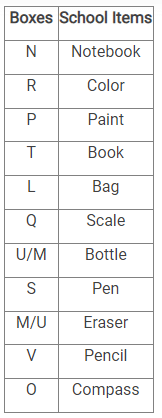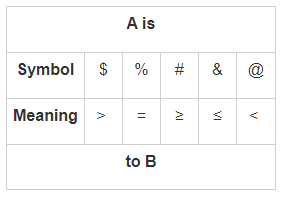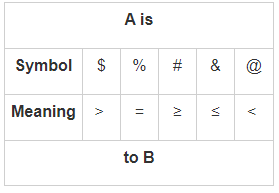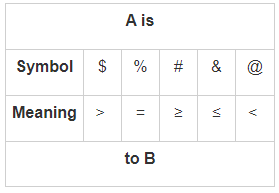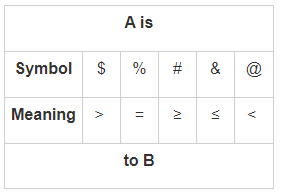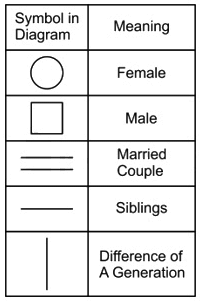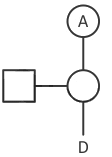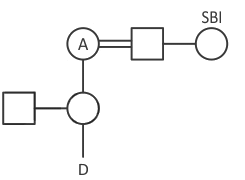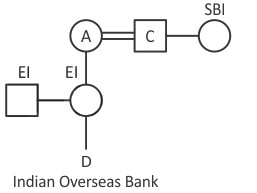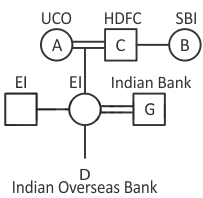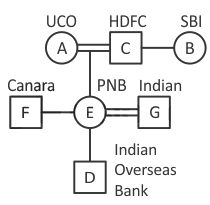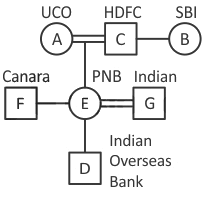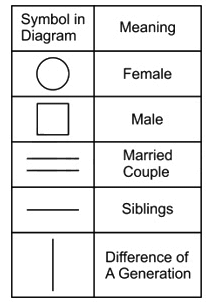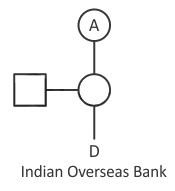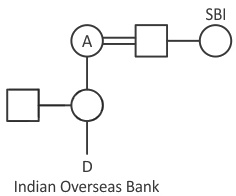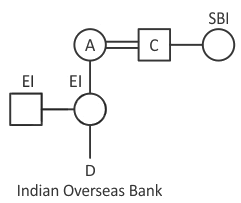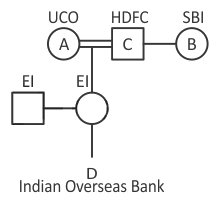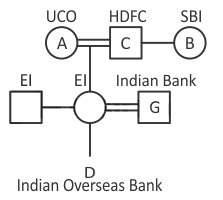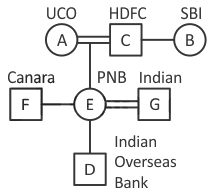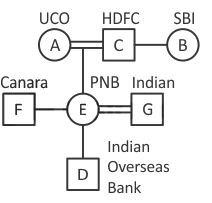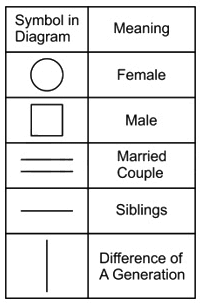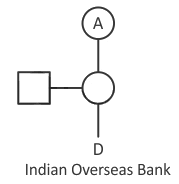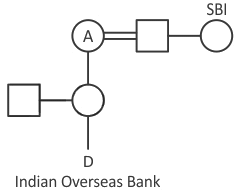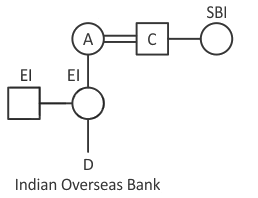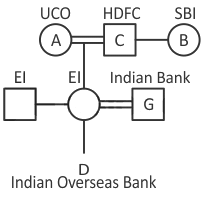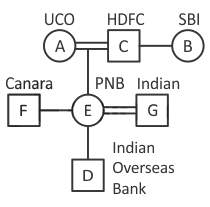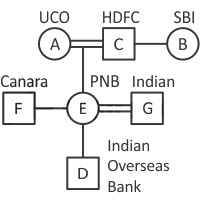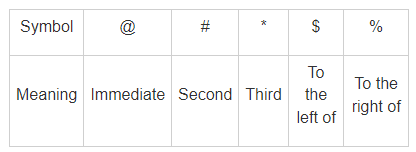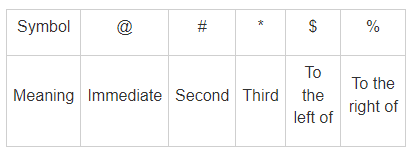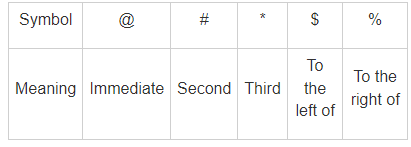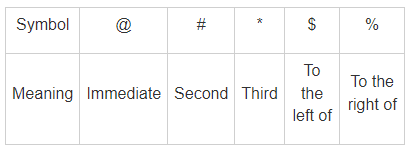IBPS Clerk Mains Mock Test - 6 - Bank Exams MCQ
30 Questions MCQ Test - IBPS Clerk Mains Mock Test - 6
Direction: In the question below are given four statements followed by four conclusions numbered I, II, III, and IV. You have to take the given statements to be true even if they seem to be at variance with commonly known facts. Read all the conclusions and then decide which of the given conclusions logically follows from the given statements disregarding commonly known facts
Statements:
Very few B is C
All C is A
Some A is D
No A is E
Conclusions:
I. Some C being E is a possibility
II. Some D is B
III. Some B is A
IV. No B is D
Directions: In the question below are given three statements followed by three conclusions numbered I, II and III. You have to take the given statements to be true even if they seem to be at variance with commonly known facts. Read all the conclusions and then decide which of the given conclusions logically follows from the given statements disregarding commonly known facts.
Statements:
All water is the pond.
Some pond is the river.
No river is the tree.
All trees are jungle.
Conclusions:
I. Some water is the river.
II. Some pond is not the tree.
III. All water being jungle is possibility.
Direction: In the question below are given four statements followed by four conclusions numbered I, II and III. You have to take the given statements to be true even if they seem to be at variance with commonly known facts. Read all the conclusions and then decide which of the given conclusions logically follows from the given statements disregarding commonly known facts.
Statements:
Some shows are concerts.
All concerts are circus.
Some circus are plays.
No play is a debate.
Conclusions:
I. Some plays are shows.
II. Some concerts are shows.
II. Some debates being concert is a possibility.
IV. All circus are debates.
Directions: In the question below are given three statements followed by three conclusions numbered I, II and III. You have to take the given statements to be true even if they seem to be at variance with commonly known facts. Read all the conclusions and then decide which of the given conclusions logically follows from the given statements disregarding commonly known facts.
Statements:
Only books are pens.
Some table are not book.
Only a few tables are chair.
Conclusions:
I. All tables are chair.
II. All pen being tables is a possibility.
III. All chair are books is a possibility.
Directions: Read the instructions carefully and answer the question below.
A, B, C, D, E, F, G, and H are the eight male members sitting around a circular table. Four of them are facing the inward direction and four are facing the outward direction. These eight people are married to eight girls namely L, M, N, O, P, Q, R, and S but not necessarily in the same order. No three consecutive people are facing the same direction.
Only one person is sitting between B and the husband of L. Both the immediate neighbours of D are facing the same direction. Either R or P is the wife of D. The husband of Q is facing the outward direction and he is sitting to the immediate right of D. B is sitting third to the right of the person who is the husband of R and they are facing the same direction. The husband of P and the husband of Q are facing the same direction. The wife of D is sitting third to the left of F. Neither O nor P is the wife of B. G is sitting third to the right of C. The husband of L is sitting third to the left of E. Only one person is sitting between F and the husband of M and they are facing the same direction. The husband of S is sitting third to the right of H. A is an immediate neighbour of the husband of M. C is sitting third to the right of the husband of M and they are facing different directions.
Who is sitting to the immediate right of the husband of N?
Directions: Read the instructions carefully and answer the question below.
A, B, C, D, E, F, G, and H are the eight male members sitting around a circular table. Four of them are facing the inward direction and four are facing the outward direction. These eight people are married to eight girls namely L, M, N, O, P, Q, R, and S but not necessarily in the same order. No three consecutive people are facing the same direction.
Only one person is sitting between B and the husband of L. Both the immediate neighbours of D are facing the same direction. Either R or P is the wife of D. The husband of Q is facing the outward direction and he is sitting to the immediate right of D. B is sitting third to the right of the person who is the husband of R and they are facing the same direction. The husband of P and the husband of Q are facing the same direction. The wife of D is sitting third to the left of F. Neither O nor P is the wife of B. G is sitting third to the right of C. The husband of L is sitting third to the left of E. Only one person is sitting between F and the husband of M and they are facing the same direction. The husband of S is sitting third to the right of H. A is an immediate neighbour of the husband of M. C is sitting third to the right of the husband of M and they are facing different directions.
Who is the wife of the person who is sitting to the immediate left of D?
Directions: Read the instructions carefully and answer the question below.
A, B, C, D, E, F, G, and H are the eight male members sitting around a circular table. Four of them are facing the inward direction and four are facing the outward direction. These eight people are married to eight girls namely L, M, N, O, P, Q, R, and S but not necessarily in the same order. No three consecutive people are facing the same direction.
Only one person is sitting between B and the husband of L. Both the immediate neighbours of D are facing the same direction. Either R or P is the wife of D. The husband of Q is facing the outward direction and he is sitting to the immediate right of D. B is sitting third to the right of the person who is the husband of R and they are facing the same direction. The husband of P and the husband of Q are facing the same direction. The wife of D is sitting third to the left of F. Neither O nor P is the wife of B. G is sitting third to the right of C. The husband of L is sitting third to the left of E. Only one person is sitting between F and the husband of M and they are facing the same direction. The husband of S is sitting third to the right of H. A is an immediate neighbour of the husband of M. C is sitting third to the right of the husband of M and they are facing different directions.
Who is sitting second to the right of the husband of P?
Directions: Read the instructions carefully and answer the question below.
A, B, C, D, E, F, G, and H are the eight male members sitting around a circular table. Four of them are facing the inward direction and four are facing the outward direction. These eight people are married to eight girls namely L, M, N, O, P, Q, R, and S but not necessarily in the same order. No three consecutive people are facing the same direction.
Only one person is sitting between B and the husband of L. Both the immediate neighbours of D are facing the same direction. Either R or P is the wife of D. The husband of Q is facing the outward direction and he is sitting to the immediate right of D. B is sitting third to the right of the person who is the husband of R and they are facing the same direction. The husband of P and the husband of Q are facing the same direction. The wife of D is sitting third to the left of F. Neither O nor P is the wife of B. G is sitting third to the right of C. The husband of L is sitting third to the left of E. Only one person is sitting between F and the husband of M and they are facing the same direction. The husband of S is sitting third to the right of H. A is an immediate neighbour of the husband of M. C is sitting third to the right of the husband of M and they are facing different directions.
Who is the husband of S?
Directions: Read the instructions carefully and answer the question below.
A, B, C, D, E, F, G, and H are the eight male members sitting around a circular table. Four of them are facing the inward direction and four are facing the outward direction. These eight people are married to eight girls namely L, M, N, O, P, Q, R, and S but not necessarily in the same order. No three consecutive people are facing the same direction.
Only one person is sitting between B and the husband of L. Both the immediate neighbours of D are facing the same direction. Either R or P is the wife of D. The husband of Q is facing the outward direction and he is sitting to the immediate right of D. B is sitting third to the right of the person who is the husband of R and they are facing the same direction. The husband of P and the husband of Q are facing the same direction. The wife of D is sitting third to the left of F. Neither O nor P is the wife of B. G is sitting third to the right of C. The husband of L is sitting third to the left of E. Only one person is sitting between F and the husband of M and they are facing the same direction. The husband of S is sitting third to the right of H. A is an immediate neighbour of the husband of M. C is sitting third to the right of the husband of M and they are facing different directions.
Who is sitting second to the left of the husband of Q?
Directions: Read the given information and carefully answer the following questions.
There are eleven boxes L, M, N, O, P, Q, R, S, T, U, and V. They all contain different school items like pen, pencil, eraser, scale, compass, bottle, bag, book, notebook, color and paint but not necessarily in the same order.
Box T that contains the book is kept above box Q and below box, R. Box S is kept immediately above the box that contains the eraser. Box that contains pen is kept in the middle of box U and box M. The box containing the notebook is kept on top. There are six boxes between box R and the box containing the eraser. Box L that contains the bag is kept immediately above the box that contains scale. Box Q has kept five boxes below the box containing the notebook. Box P that contains paint is kept immediately above the box T. Box R is neither kept at the top nor the bottom. Two boxes are kept between the box that contains the book and the box that contains the bottle. Only one box is kept below the box containing a pencil. There are three boxes between box S and box T. Box V is kept immediately above box O that contains a compass.
Which box is kept in the middle?
Directions: Read the given information and carefully answer the following questions.
There are eleven boxes L, M, N, O, P, Q, R, S, T, U, and V. They all contain different school items like pen, pencil, eraser, scale, compass, bottle, bag, book, notebook, color and paint but not necessarily in the same order.
Box T that contains the book is kept above box Q and below box R. Box S is kept immediately above the box that contains the eraser. Box that contains pen is kept in the middle of box U and box M. The box containing the notebook is kept on top. There are six boxes between box R and the box containing the eraser. Box L that contains the bag is kept immediately above the box that contains scale. Box Q has kept five boxes below the box containing the notebook. Box P that contains paint is kept immediately above the box T. Box R is neither kept at the top nor the bottom. Two boxes are kept between the box that contains the book and the box that contains the bottle. Only one box is kept below the box containing a pencil. There are three boxes between box S and box T. Box V is kept immediately above box O that contains a compass.
Which box is kept exactly between the box of pen and box of color?
Directions: Read the given information and carefully answer the following questions.
There are eleven boxes L, M, N, O, P, Q, R, S, T, U, and V. They all contain different school items like pen, pencil, eraser, scale, compass, bottle, bag, book, notebook, color and paint but not necessarily in the same order.
Box T that contains the book is kept above box Q and below box R. Box S is kept immediately above the box that contains the eraser. Box that contains pen is kept in the middle of box U and box M. The box containing the notebook is kept on top. There are six boxes between box R and the box containing the eraser. Box L that contains the bag is kept immediately above the box that contains scale. Box Q has kept five boxes below the box containing the notebook. Box P that contains paint is kept immediately above the box T. Box R is neither kept at the top nor the bottom. Two boxes are kept between the box that contains the book and the box that contains the bottle. Only one box is kept below the box containing a pencil. There are three boxes between box S and box T. Box V is kept immediately above box O that contains a compass.
Which box contains color?
Directions: Read the given information and carefully answer the following questions.
There are eleven boxes L, M, N, O, P, Q, R, S, T, U, and V. They all contain different school items like pen, pencil, eraser, scale, compass, bottle, bag, book, notebook, color and paint but not necessarily in the same order.
Box T that contains the book is kept above box Q and below box R. Box S is kept immediately above the box that contains the eraser. Box that contains pen is kept in the middle of box U and box M. The box containing the notebook is kept on top. There are six boxes between box R and the box containing the eraser. Box L that contains the bag is kept immediately above the box that contains scale. Box Q has kept five boxes below the box containing the notebook. Box P that contains paint is kept immediately above the box T. Box R is neither kept at the top nor the bottom. Two boxes are kept between the box that contains the book and the box that contains the bottle. Only one box is kept below the box containing a pencil. There are three boxes between box S and box T. Box V is kept immediately above box O that contains a compass.
How many boxes are kept between boxes P and M?
Directions: Read the given information and carefully answer the following questions.
There are eleven boxes L, M, N, O, P, Q, R, S, T, U, and V. They all contain different school items like pen, pencil, eraser, scale, compass, bottle, bag, book, notebook, color and paint but not necessarily in the same order.
Box T that contains the book is kept above box Q and below box, R. Box S is kept immediately above the box that contains the eraser. Box that contains pen is kept in the middle of box U and box M. The box containing the notebook is kept on top. There are six boxes between box R and the box containing the eraser. Box L that contains the bag is kept immediately above the box that contains scale. Box Q has kept five boxes below the box containing the notebook. Box P that contains paint is kept immediately above the box T. Box R is neither kept at the top nor the bottom. Two boxes are kept between the box that contains the book and the box that contains the bottle. Only one box is kept below the box containing a pencil. There are three boxes between box S and box T. Box V is kept immediately above box O that contains a compass.
Which box is kept immediately above the box of the bag?
Direction: In the following question, the symbols $, %, #, & and @ are used with the following meaning as illustrated below:
‘A $ B’ means ‘A is greater than B’.
‘A % B’ means ‘A is equal to than B’.
‘A # B’ means ‘A is greater than or equal to than B’.
‘A & B’ means ‘A is smaller than or equal to than B’.
‘A @ B’ means ‘A is smaller than B’.
Now in each of the following questions assuming the given statements to be true, find which of the conclusions given below is/are definitely true?
Statement:
U & T & B % R & V & W $ Z $ A
Conclusion:
I. U & V
II. A $ W
III. R @ Z
Direction: In the following question, the symbols $, %, #, & and @ are used with the following meaning as illustrated below:
‘A $ B’ means ‘A is greater than B’.
‘A % B’ means ‘A is equal to than B’.
‘A # B’ means ‘A is greater than or equal to than B’.
‘A & B’ means ‘A is smaller than or equal to than B’.
‘A @ B’ means ‘A is smaller than B’.
Now in each of the following questions assuming the given statements to be true, find which of the conclusions given below is/are definitely true?
Statement:
E @ F % G & H % I @ K & J
Conclusion:
I. G @ I
II. H # E
III. F $ K
Direction: In the following question, the symbols $, %, #, & and @ are used with the following meaning as illustrated below:
‘A $ B’ means ‘A is greater than B’.
‘A % B’ means ‘A is equal to than B’.
‘A # B’ means ‘A is greater than or equal to than B’.
‘A & B’ means ‘A is smaller than or equal to than B’.
‘A @ B’ means ‘A is smaller than B’.
Now in each of the following questions assuming the given statements to be true, find which of the conclusions given below is/are definitely true?
Statement:
U & F % G & H % K # J
Conclusion:
I. G $ J
II. G % K
III. F $ H
Direction: In the following question, the symbols $, %, #, & and @ are used with the following meaning as illustrated below:
‘A $ B’ means ‘A is greater than B’.
‘A % B’ means ‘A is equal to than B’.
‘A # B’ means ‘A is greater than or equal to than B’.
‘A & B’ means ‘A is smaller than or equal to than B’.
‘A @ B’ means ‘A is smaller than B’.
Now in each of the following questions assuming the given statements to be true, find which of the conclusions given below is/are definitely true?
Statement:
L $ M % O # N @ R % J
Conclusion:
I. L $ R
II. N @ L
III. J $ N
Directions: Read the given information and carefully answer the following questions.
There are 7 members in a family, males are more in number than females in the family. Either both or none of the parents is alive in the family.
A is the grandmother of D who works in the Indian Overseas Bank. C has two children and one of them is E. A has only one male child who is not married. The one who works in SBI is the sister-in-law of A. The one who works in Canara bank is the brother of the one who works in PNB, who is not F. G works in Indian bank and is not the child of A. B belongs to the first generation. A and C work in UCO and HDFC banks respectively.
Who among the following works in Indian Overseas Bank?
Directions: Read the given information and carefully answer the following questions.
There are 7 members in a family, males are more in number than females in the family. Either both or none of the parents is alive in the family.
A is the grandmother of D who works in the Indian Overseas Bank. C has two children and one of them is E. A has only one male child who is not married. The one who works in SBI is the sister-in-law of A. The one who works in Canara bank is the brother of the one who works in PNB, who is not F. G works in Indian bank and is not the child of A. B belongs to the first generation. A and C work in UCO and HDFC banks respectively.
What is the relation of the one who works in UCO bank with the one who works in Indian bank?
Directions: Read the given information and carefully answer the following questions.
There are 7 members in a family, males are more in number than females in the family. Either both or none of the parents is alive in the family.
A is the grandmother of D who works in the Indian Overseas Bank. C has two children and one of them is E. A has only one male child who is not married. The one who works in SBI is the sister-in-law of A. The one who works in Canara bank is the brother of the one who works in PNB, who is not F. G works in Indian bank and is not the child of A. B belongs to the first generation. A and C work in UCO and HDFC banks respectively.
In which of the following banks does E work?
If it is possible to make only one six-letter meaningful English word with the 2nd, 3rd, and 8th letter of the word FLOCCULANT and 1st, 3rd, and 5th letter of the word GONDOLA, which of the following will be the second letter from the left of that word? If no such word can be made give ‘X’ as the answer and if more than one such word can be made give ‘Y’ as the answer.
If in the word “AMERICAN” every vowel changes to the next vowel then rearrange the alphabetic order, how many letters are unchanged?
Direction: Study the following information carefully and answer the given questions.
In the following information, the symbols @, # and * are used to tell the positions, immediate, second and third of the first person with respect to the second, respectively. The symbols $ and % are used to tell the position, ‘ to the left of ’ and ‘ to the right of ‘ of the first person with respect to the second person respectively. Thus it requires two symbols to tell the exact position of the first person with respect to the second person.
Example: A @ $ B → A is sitting to the immediate left of B.
A certain number of people are sitting in a straight line with no vacant seat and all of them are facing north.
Arni @ $ Aahan; Amik # $ Asav; Ahuk # % Advik; Asav @ % Aaif; Arni * $ Aadesh; Aaif * $ Aahan.
Complete the following statement.
Aaif __ $ Arni.
Direction: Study the following information carefully and answer the given questions.
In the following information, the symbols @, # and * are used to tell the positions, immediate, second and third of the first person with respect to the second, respectively. The symbols $ and % are used to tell the position, ‘ to the left of ’ and ‘ to the right of ‘ of the first person with respect to the second person respectively. Thus it requires two symbols to tell the exact position of the first person with respect to the second person.
Example: A @ $ B → A is sitting to the immediate left of B.
A certain number of people are sitting in a straight line with no vacant seat and all of them are facing north.
Arni @ $ Aahan; Amik # $ Asav; Ahuk # % Advik; Asav @ % Aaif; Arni * $ Aadesh; Aaif * $ Aahan.
How many people are sitting in a straight line?
Direction: Study the following information carefully and answer the given questions.
In the following information, the symbols @, # and * are used to tell the positions, immediate, second and third of the first person with respect to the second, respectively. The symbols $ and % are used to tell the position, ‘ to the left of ’ and ‘ to the right of ‘ of the first person with respect to the second person respectively. Thus it requires two symbols to tell the exact position of the first person with respect to the second person.
Example: A @ $ B → A is sitting to the immediate left of B.
A certain number of people are sitting in a straight line with no vacant seat and all of them are facing north.
Arni @ $ Aahan; Amik # $ Asav; Ahuk # % Advik; Asav @ % Aaif; Arni * $ Aadesh; Aaif * $ Aahan.
Who sits on the extreme right corner?
Direction: Study the following information carefully and answer the given questions.
In the following information, the symbols @, # and * are used to tell the positions, immediate, second and third of the first person with respect to the second, respectively. The symbols $ and % are used to tell the position, ‘ to the left of ’ and ‘ to the right of ‘ of the first person with respect to the second person respectively. Thus it requires two symbols to tell the exact position of the first person with respect to the second person.
Example: A @ $ B → A is sitting to the immediate left of B.
A certain number of people are sitting in a straight line with no vacant seat and all of them are facing north.
Arni @ $ Aahan; Amik # $ Asav; Ahuk # % Advik; Asav @ % Aaif; Arni * $ Aadesh; Aaif * $ Aahan.
What is the position of Amik with respect to the Arni?
Direction: Study the following information carefully and answer the given questions.
In the following information, the symbols @, # and * are used to tell the positions, immediate, second and third of the first person with respect to the second, respectively. The symbols $ and % are used to tell the position, ‘ to the left of ’ and ‘ to the right of ‘ of the first person with respect to the second person respectively. Thus it requires two symbols to tell the exact position of the first person with respect to the second person.
Example: A @ $ B → A is sitting to the immediate left of B.
A certain number of people are sitting in a straight line with no vacant seat and all of them are facing north.
Arni @ $ Aahan; Amik # $ Asav; Ahuk # % Advik; Asav @ % Aaif; Arni * $ Aadesh; Aaif * $ Aahan.
Choose the correct statement.
Directions: The critical reasoning question is based on a short argument, a set of statements, or a plan of action. For each question, select the best answer of the choices given and explain why the chosen answer is the right fit.
Statement: It is observed that the team of average workers led by an efficient manager performs better than a team of smart workers led by an inefficient manager. However, smart workers tend to work alone than in teams.
Which of the following can certainly be implied from this?
Direction: Study the following information carefully to answer the given questions:
Input: L 5 C # 1 @ J 2 B N % O Q & 3 W K P $ 4 X
Step 1: Place all the symbols which are preceded and followed by a letter, between 3W.
Step 2: After completing step 1, shift all the numbers between J and 2 that are immediately preceded by a symbol and immediately followed by a letter.
With respect to the series obtained after step 2, four of the following five are similar in some way and thus form a group. Which of the following does not belong to the group?





